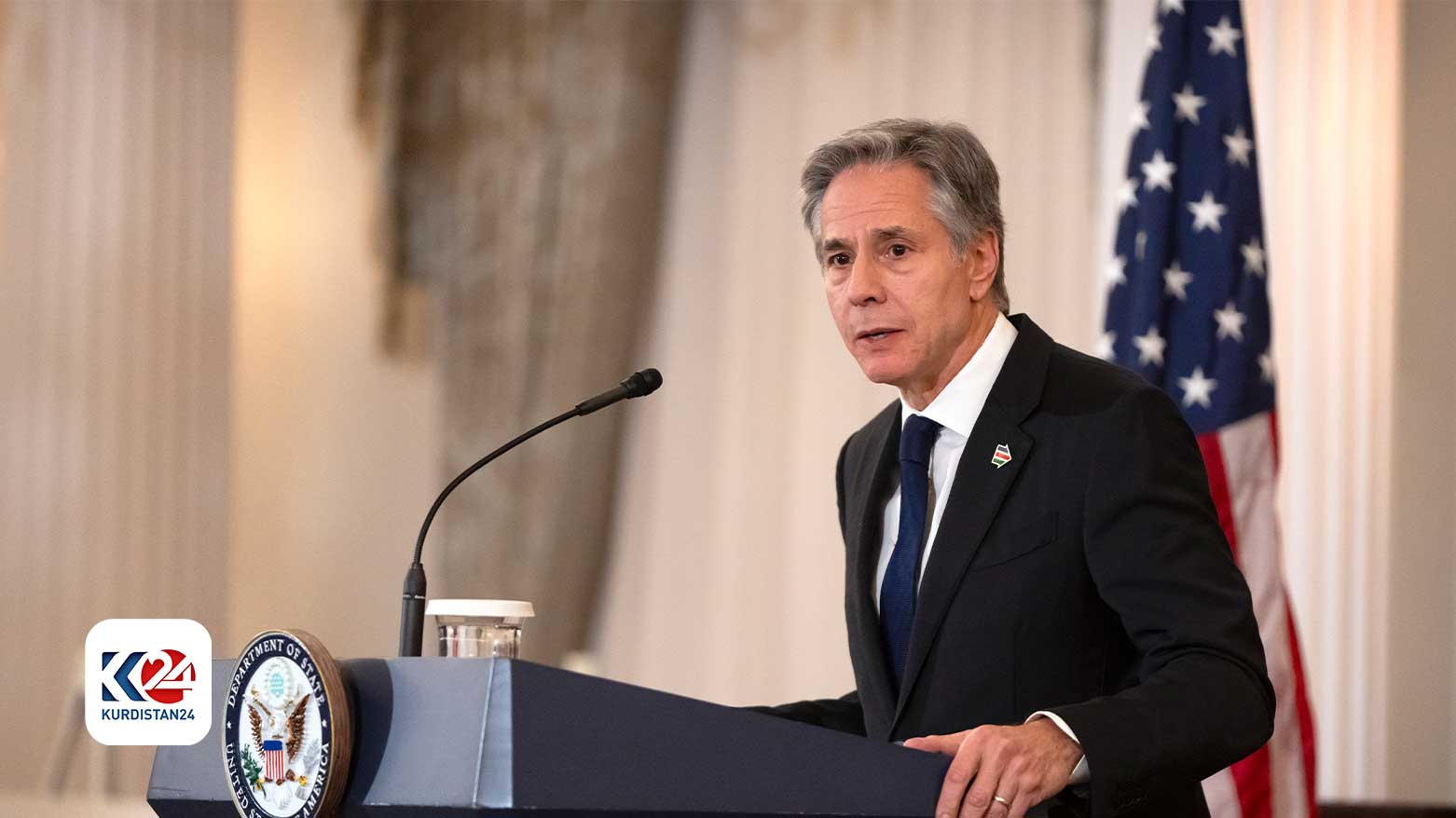US Reaffirms Commitment to Continued Fight against ISIS, even after Fall of Syrian Regime
Key U.S. interests in Syria include “preventing the re-emergence of ISIS, given the death and destruction that it’s wrought for so long,”

Dec 10, 2024
WASHINGTON DC, United States (Kurdistan 24) Speaking on Monday at an event honoring international figures who have distinguished themselves in the fight against corruption, Secretary of State Antony Blinken began, instead, by discussing the situation in Syria.
He started by describing the impact which “the scenes of jubilation, the scenes of relief coming out of Syria, people dancing in the streets,” have had on him personally. “It is impossible not to be moved,” he said.
Blinken signaled a continuation of U.S. policy toward Syria in key respects—including the continued fight against ISIS—along with the hope that the U.S. can facilitate a smooth transition to a new Syrian government, based on UN Security Resolution 2254.
Key U.S. Interests: Fighting ISIS; Preventing Use of WMD; Maintaining Syrian Unity; Preventing Mass Migration and Export of Terrorism
The key U.S. interests in the Syrian transition, as explained by Blinken, include “preventing the re-emergence of ISIS, given the death and destruction that it’s wrought for so long,” he stated.
That point was repeated later on Monday by State Department Spokesperson Matthew Miller during his press briefing.
As Miller laid out the U.S. view on the next steps in Syria, he affirmed, “We will also maintain our mission against ISIS and protect our forces against any threats.”
As a concrete demonstration of that point, Miller noted two recent U.S. strikes. They include a massive attack on Sunday on 75 ISIS targets in central Syria and more limited strikes last Tuesday in eastern Syria on weapons being prepared for an attack on a small U.S. military base.
Read More: US Bombs “Over 75” ISIS Targets in “Central Syria” after Fall of Assad Regime
Read More: U.S. Destroys Threatening Weapons Systems in Eastern Syria
“We will not allow ISIS to use this moment to regroup and relaunch terrorist attacks that threaten the interests of the United States,” Miller affirmed.
No Use of WMD
The second key U.S. interest, as described by Blinken, was “ensuring that whatever weapons of mass destruction or components are left in Syria do not fall into the wrong hands.”
In a report on Monday, The New York Times described the recent history of Syria’s chemical weapons program and its incomplete destruction, despite claims to the contrary.
As the Syrian civil war began in 2011, the U.S. was concerned that Assad would use chemical weapons to suppress the popular revolt.
Then-President Barack Obama solemnly warned that any such use would cross a “red line” that would justify a U.S. military response. But he spoke hollow and empty words.
Assad ignored Obama’s warning, and in 2013, Syria forces dropped sarin gas on a Damascus suburb, Ghouta. They killed over 1,400 civilians.
Instead of the military response that it had threatened, the Obama administration reached an understanding with Russia to eliminate Syria’s chemical weapons program.
The Organization for the Prohibition of Chemical Weapons (OPCW) was charged with destroying Syria’s chemical stockpiles. However, there was a catch: the OPCW was dependent on the Syrian regime to inform it about those stockpiles. If the regime did not declare the material, the OPCW would not know about it, and, therefore, could not destroy it.
“Syria’s inventory was incomplete,” as The New York Times wrote. In 2017, three years after the OPCW claimed to have destroyed the entirety of Syria’s chemical weapons stockpile, the regime used chemical weapons, including sarin gas, in an attack that killed over 80 people in Khan Shaykhun, a town in Idlib Province.
And the following year, in April 2018, another chemical assault killed 50 people in an attack near Damascus.
Even now, U.S. officials believe that the Syrian regime has retained some ability to use chemical weapons, the Times reported..
However, throughout the day on Monday, Israel launched over 200 air strikes on Syrian military targets. Even before those attacks, the Times had concluded that it was unlikely that whatever remained of Syria’s chemical weapons stockpiles could seriously be used for hostile purposes. Now that seems even less likely.
Preserving Syrian Unity; Preventing Mass Migration; No Export of Terrorism
Blinken summed up his description of three more U.S. concerns in Syria in one sentence. “We have a clear interest in doing what we can to avoid the fragmentation of Syria, mass migrations from Syria, and, of course, the export of terrorism and extremism,” he said.
These seemed to be, while still important, of somewhat less centrality than countering ISIS and preventing Syria’s chemical weapons from falling into the wrong hands.
Generally, Blinken stressed that the Syrian people should “be the ones to choose their path, their future,” and the U.S. is certainly ready to do what it can to facilitate that.
However, the Biden administration was caught by surprise with the fall of the Assad regime. It had no plan, and now time is short. There are only six weeks left in Biden’s presidency. Most realistically, it can only lay the groundwork for the next administration to do the job.
